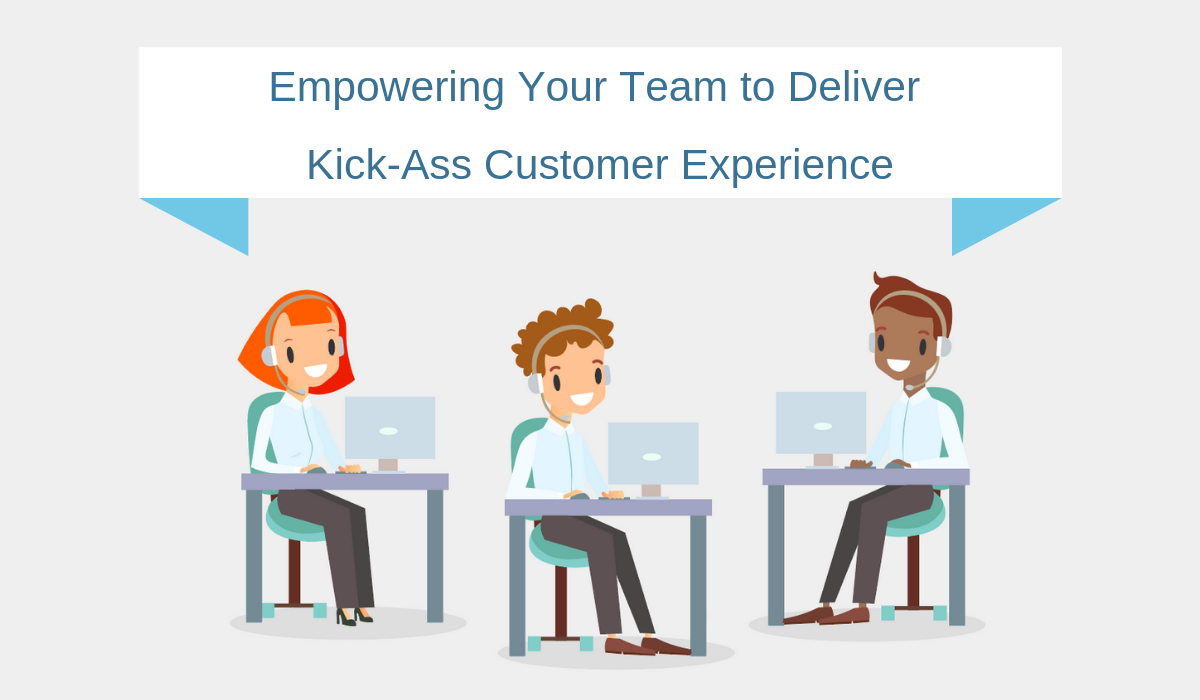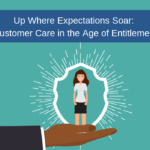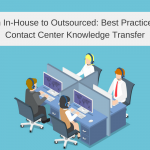Empowering Your Team to Deliver Kick-Ass Customer Experience

Quick, how many services or memberships do you subscribe to? One? Two? Twenty? You know your wallet is stuffed with membership cards (roadside assistance, your local gym, and Costco) and your front porch welcomes monthly subscription boxes (Blue Apron, Trunk Club, and Honest Essentials), while your go-to entertainment is no longer cable TV but subscription-based media (Netflix, Hulu, and Amazon Prime.) The scene at work is the same: subscriptions abound for things like Salesforce, teleconferencing services, training programs, Harvard Business Review…
TL;DR: Empowering contact center agents depends upon three key factors: engagement, communication, and feedback.
Obviously, subscriptions and memberships aren’t a new phenomenon by any stretch of the imagination. But the subscription services market is on fire, growing by more than 100% in five years.
It’s a trend that has a significant impact on the customer care sector. There are very real service expectation differences between providing customer service to a one-off consumer versus a loyal member. In the membership scenario, solving a problem isn’t enough. Instead, creating a consistent, differentiated experience is everything. And what we’ve discovered over the years is that empowering your agents to deliver these kick-ass customer experiences is the best way to delight your members and subscribers time and time again.
So, what does it take? We checked in with Carol Sam, Project Coordinator at Blue Ocean, who excels in leading her team of agents to consistently deliver high-quality experiences to our client’s members – under the highest stress situations providing emergency roadside assistance. For Carol, empowering contact center agents depends upon three key factors: engagement, communication, and feedback.
But first –
What is a Kick-Ass Customer Experience Anyway?
A global, cross-industry study published by Matthew Dixon in the Harvard Business Review helps us answer this (we were also honored to be featured in the ensuing article, Kick-Ass Customer Service).
There’s a significant sector of today’s customers who prefer taking care of things themselves before they even think to call, email, or live chat someone to help. This is especially true for customers who have memberships or subscriptions, which naturally come with a range of self-serve resources.
So, when they do finally call, their issue is more complex – and more frustrating – than they could solve themselves. In other words, their customer experience has already been damaged before they engage with the agent. Which means you need skilled agents to meet their needs – empathy is important, but more than that, you need confident decision makers, who aren’t afraid to take control of the conversation, and are motivated to deliver the best solution fast.
Hire the right people, and you’re instantly better positioned to deliver a customer experience that is solution-focused yet highly personalized.
That said, let’s explore what it takes to truly empower these agents to deliver.
Engaging Your Frontline Agents
Carol Sam is a lifelong athlete, an MVP basketball player. It’s this experience that contributes to her success in creating a sense of team mission. “Teamwork makes the dream work,” she says – her lifelong motto. It’s not like tennis – in basketball, it’s impossible to do it all by yourself – every single position, from the point guard to the small forward, is critical. It takes more than one person to win.
Similarly, every single agent is a part of something greater. Your most productive agent can’t hit service level by themselves. Your highest QA scoring agents aren’t going to carry quality scores for the whole team. When the client contract demands consistent excellence with targets like 80% of team meeting quality goals – Carol focuses on getting the team aligned and enabling individuals to identify how critical to their performance is to overall success. Engaging agents in the big picture starts from Day One in the onboarding and training process. Our trainers spend a lot of time with new agents, helping them understand the impact of their role when interacting with members. Through the training program, we’re looking to identify and address any barriers that will hold agents back from delivering kick-ass experiences – overcoming those barriers particularly through the strategic use of role-play exercises and positive reinforcement.
When Carol first came on board as program coordinator, the quality of the member experience for this particular project wasn’t consistent. The program experiences extreme peaks and valleys in volume and quality sometimes suffered when volume was in excess of 150% of forecast. Carol implemented more role play in training and adjusted the training schedule. This proved to be a highly effective strategy, with agents who’d received the revised training curriculum outperforming existing agents right out of the gate in metrics that measured the customer experience. The changes to training made a direct impact in agent competence and agent confidence as the newbies hit the production floor.
Communicating with Your Frontline Agents
Hand-in-hand with engagement is communication.
It starts with transparency. Your agents need to know what’s going on so they feel empowered to make decisions that wow the customer. That means sharing forecasts, goals, and metrics, and ensuring they understand how their roles impact each of those things. This is especially important when volume spikes and agents are thrown into high-stakes scenarios.
Recently, Carol’s team, working with the client’s in-house team, fielded more than 20,000 emergency assistance calls in one day – more than a 100% increase from the previous single-day record of 8,000 calls the year before. In a situation where the pressure on agents is intense and unrelenting, if they can’t see that they’re making a difference with every single call, the customer experience could suffer. Carol tells her team to focus on just one call at a time and they will get through it. She sees herself as the communication facilitator making sure agents, coaches, and managers and the client are all on the same page to keep all hands-on-deck without sacrificing quality.
What’s the best way to communicate with your frontline agents?
We approach internal team communications the same way we approach customer care – use all the channels available in the way that is most appropriate to the situation and best suits the individuals involved. In-person communications include side-by-side coaching, monthly one-on-ones, as well as and small focus groups. We also use video communication (and importantly, we schedule time for individual agents to watch) group chat to share important messages and keep morale high. It’s also key to remember that communication is a two-way street – your agents need to feel heard. When, for example, your agents experience a barrier in their effort to deliver an exceptional customer experience, it’s up to you to hear them out, help them identify the challenges, and collaborate with the client to help remove that barrier.
Providing Agent Feedback
Engagement and communication, while ongoing, represent to some degree the pre-game planning and game-playing itself. Feedback is the post-game playback that is essential for future improvement.
For Carol’s team that feedback comes from reviewing quality scores and “voice of member” scores – coach and agent together, in person. Both are equally important and indicate how knowledgeable and confident an agent is on the floor. Whether an agent’s score is great or mediocre, they are going to want to know how to get their scores up, as well as getting more insight on exactly how to improve their communication with members. We also watch out for trends in an agent’s performance, adjusting their ongoing training accordingly.
On the program Carol supports, the feedback schedule is strategic. By implementing a process where agents scoring in the mid-range receive a higher frequency of coaching sessions, the team successful increased their average monthly quality scores by six percentage points consistently while increasing the percent of team meeting quality targets by more than ten points. In this cadence, agents with gaps to fill receive 12 coaching sessions a month, some in person and some through desktop coaching packages customized to the individual. Top scoring agents receive eight coaching sessions a month – that personal feedback is critical to engagement and striving, so top agents should never be overlooked.
Ultimately, our goal is to help our agents achieve their goals. When they feel empowered to deliver their best performance, our clients’ members feel confident in the service we’re providing.
Empowering Your Agents to Deliver Kick-Ass Customer Experience
Because members and subscribers are more than just one-time customers, delivering a consistent customer experience every single time they interact with the contact center is critical to their continued brand loyalty.
Consistency is only possible when your agents feel empowered, knowledgeable, and confident on every single contact. Creating that trifecta of high-performing traits in your agent workforce is achieved through end-to-end engagement, regular communication, and honest, actionable feedback.
Delivering kick-ass customer experience is our brand promise – and we can’t wait to show you. Looking to supplement or migrate your customer care program? Let’s chat today.
Read this next:
Secrets to Incredible Customer Service with Paul R. Jones
Which 2019 Consumer Trends Will Impact Your Customer Experience Strategy?



